Abstract
Mathematical considerations of the behavior of aerosolized particles in a rotating drum are presented, and the rotating drum as an aerosol-holding device is compared with a stirred settling chamber. The basic overall design elements of a facility employing eight rotating drums are presented. This facility provides an environment in which temperature can be maintained within 0.5 F (0.25 C) of any set point over a range of 50 to 120 F (10 to 49 C); concomitantly the relative humidity within any selected drum may be controlled in a nominal range of 0 to 90%. Some of the major technical aspects of operating this facility are also presented, including handling of air support systems, aerosol production, animal exposure, aerosol monitoring, and sampling.
Full text
PDF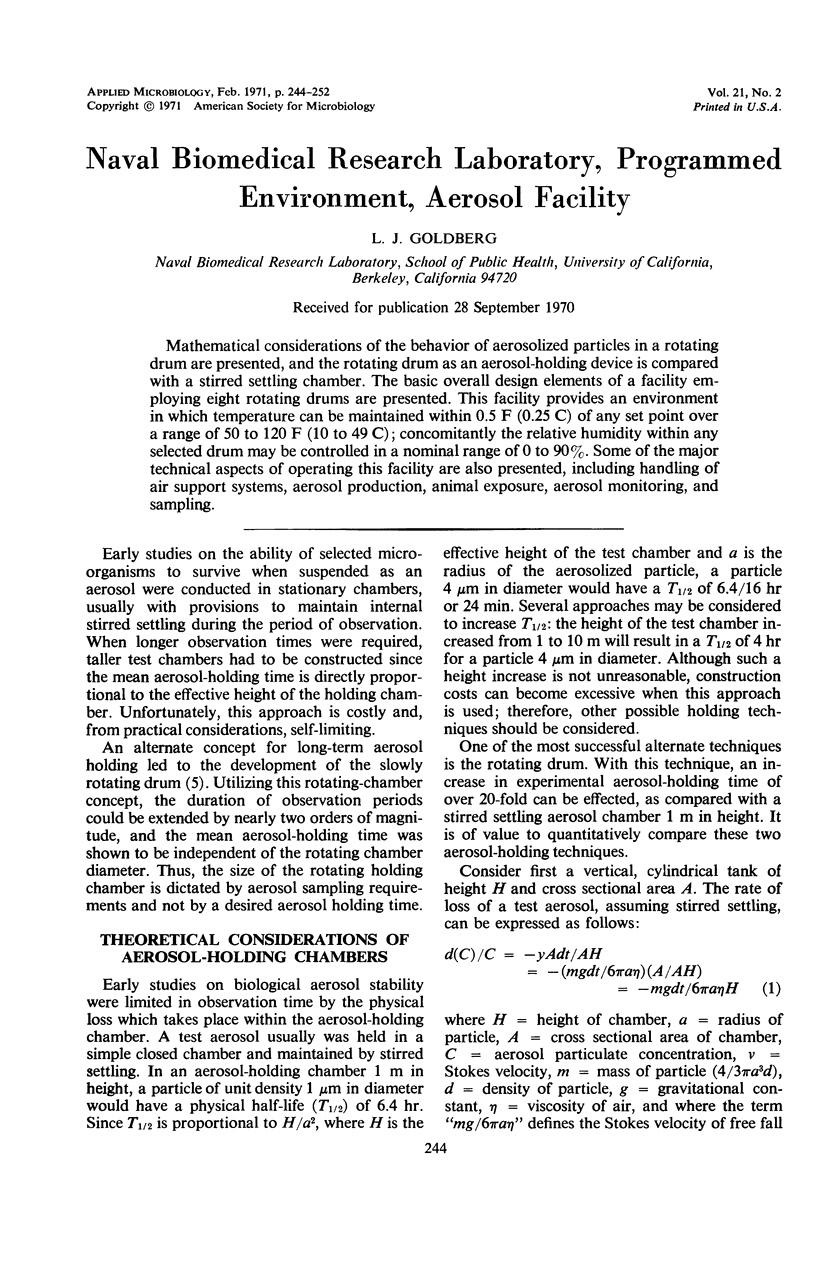
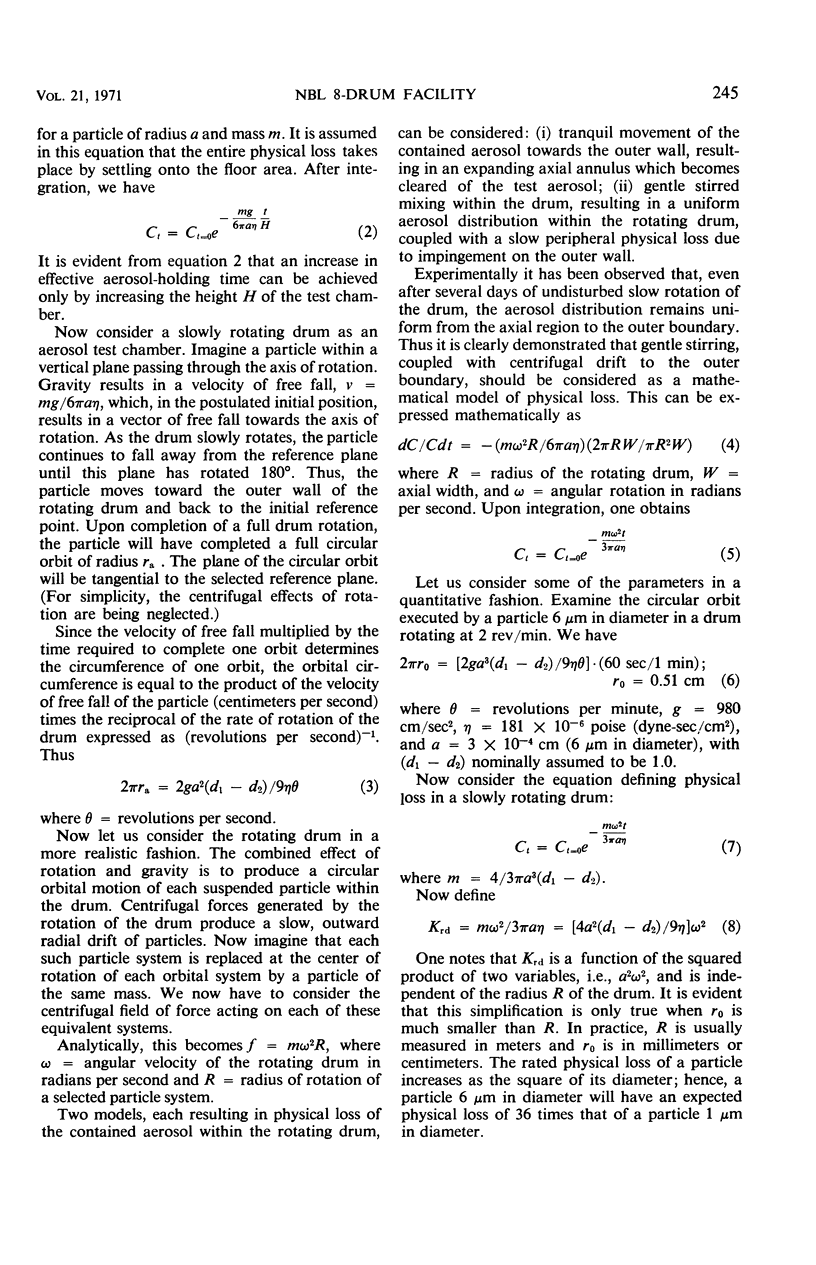
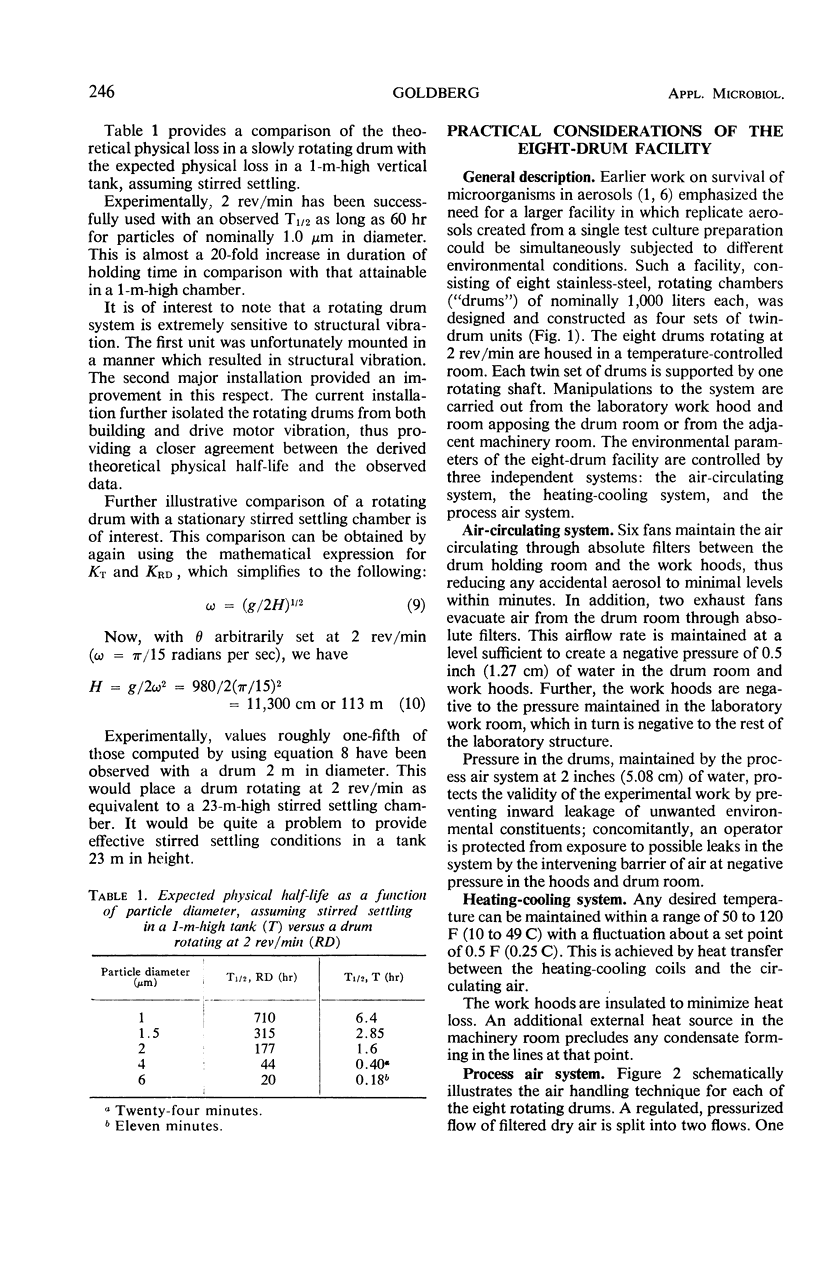
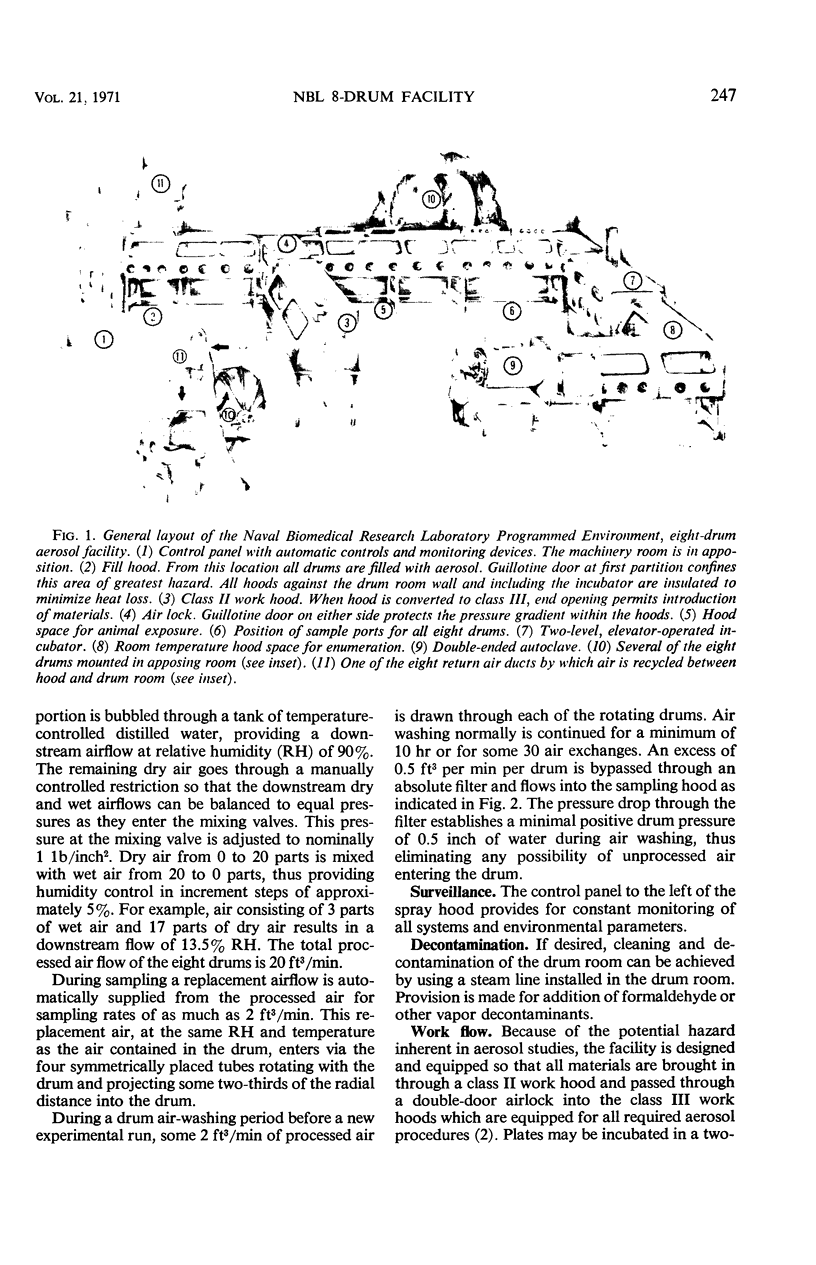
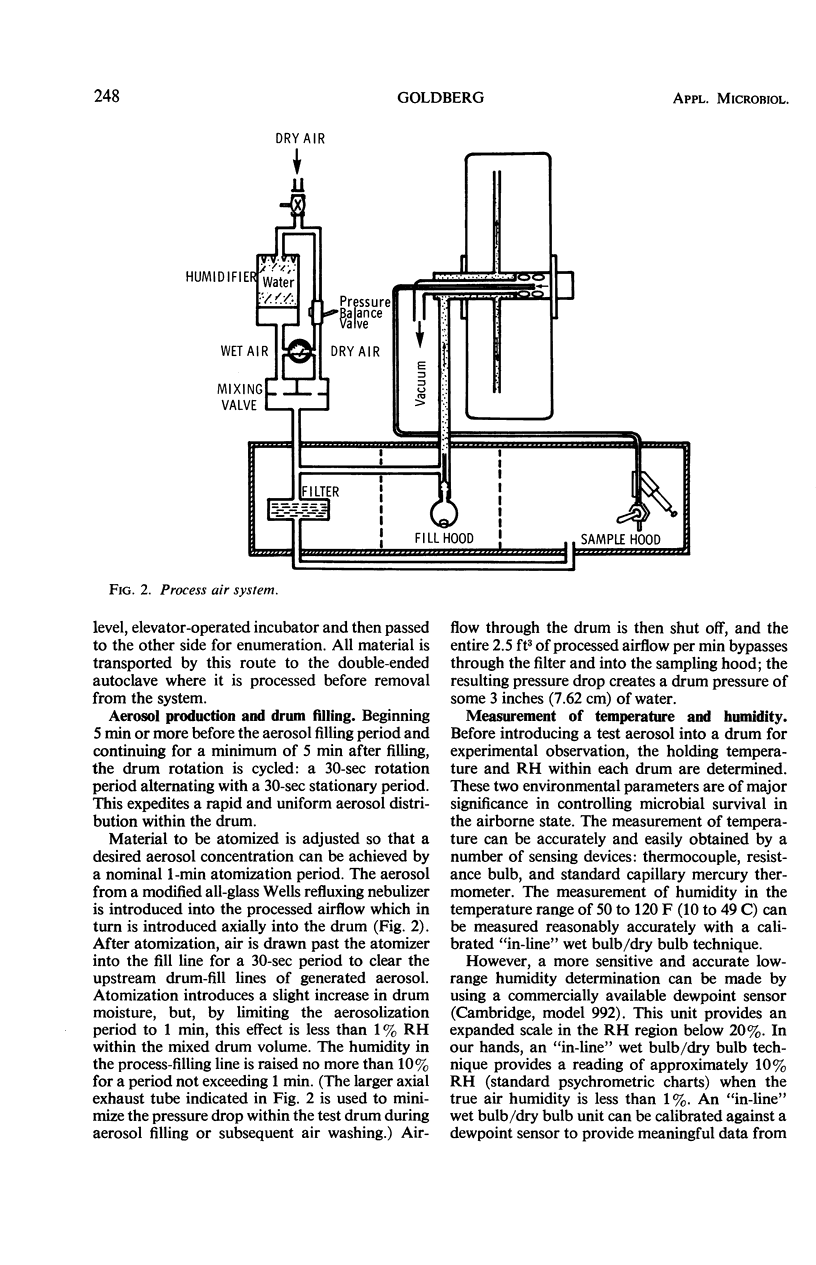
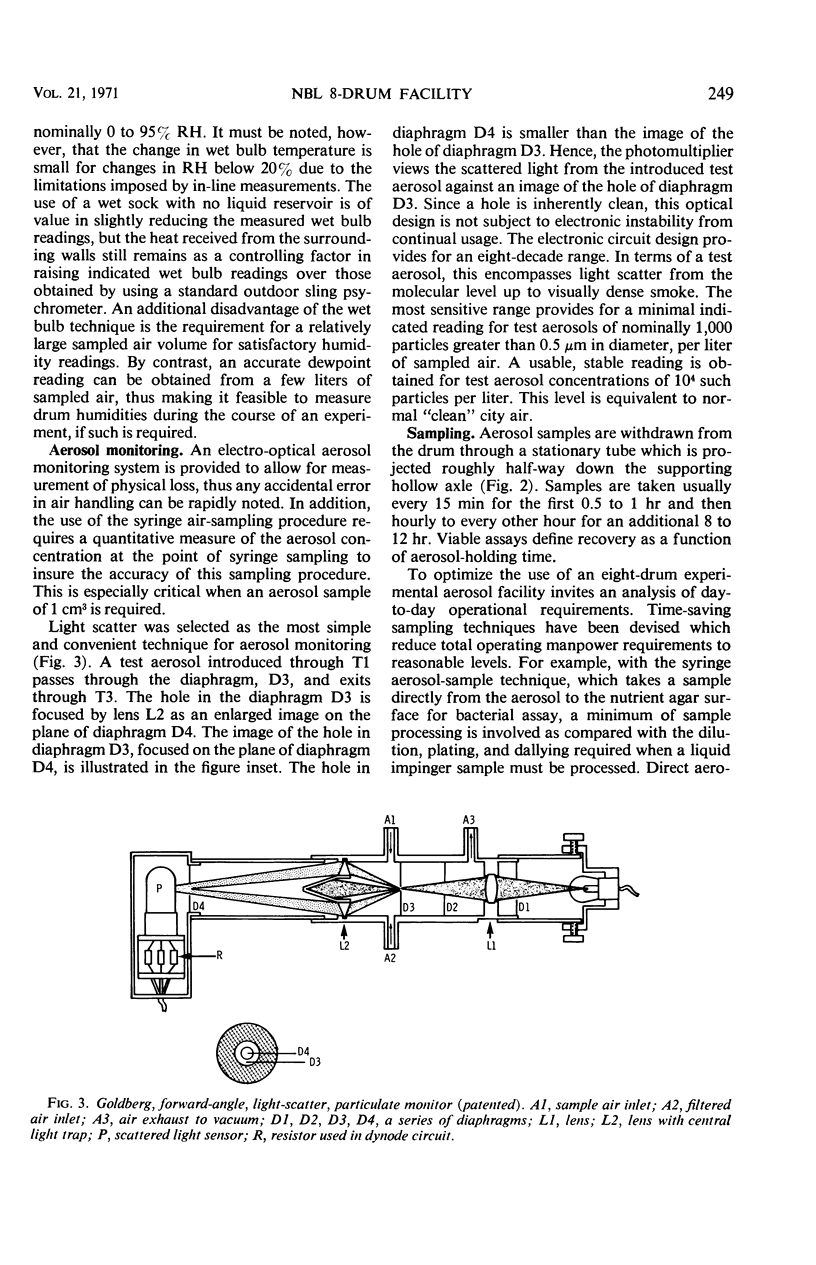
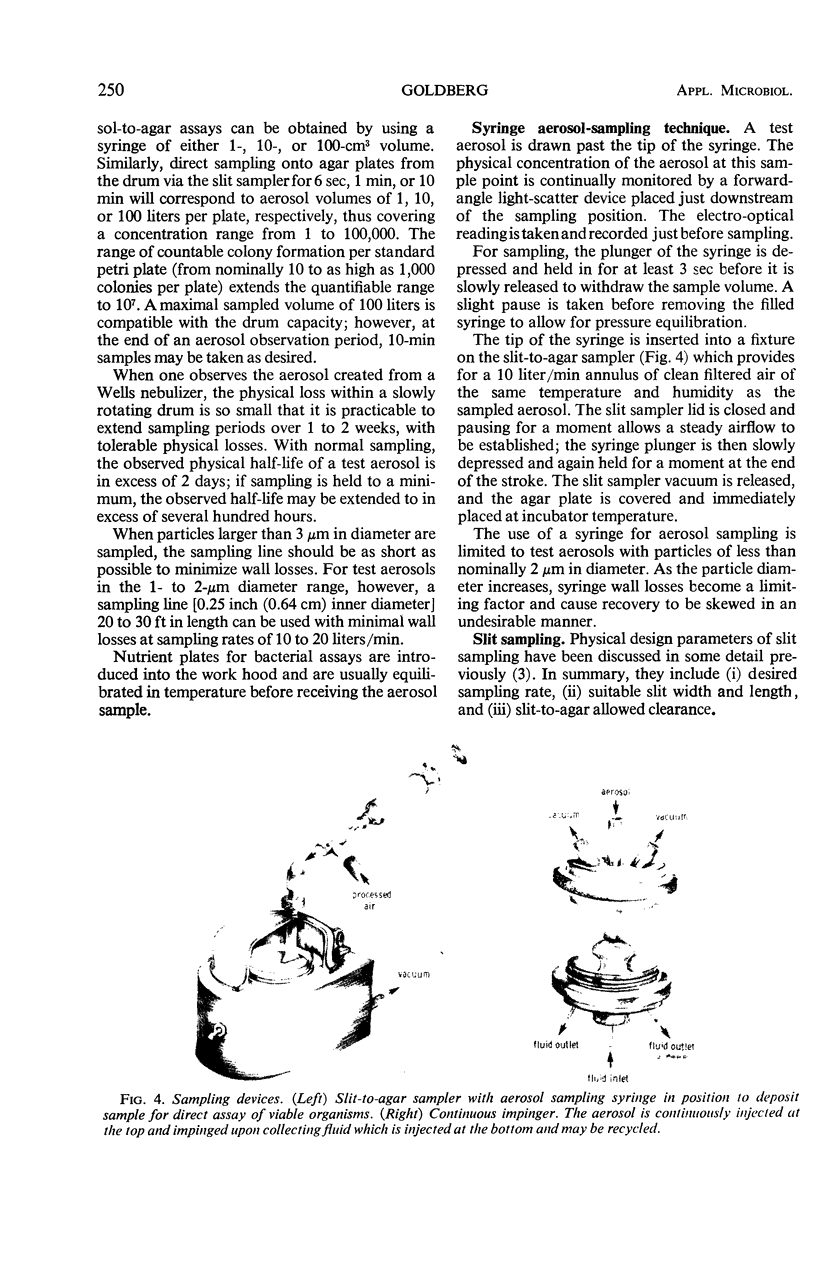
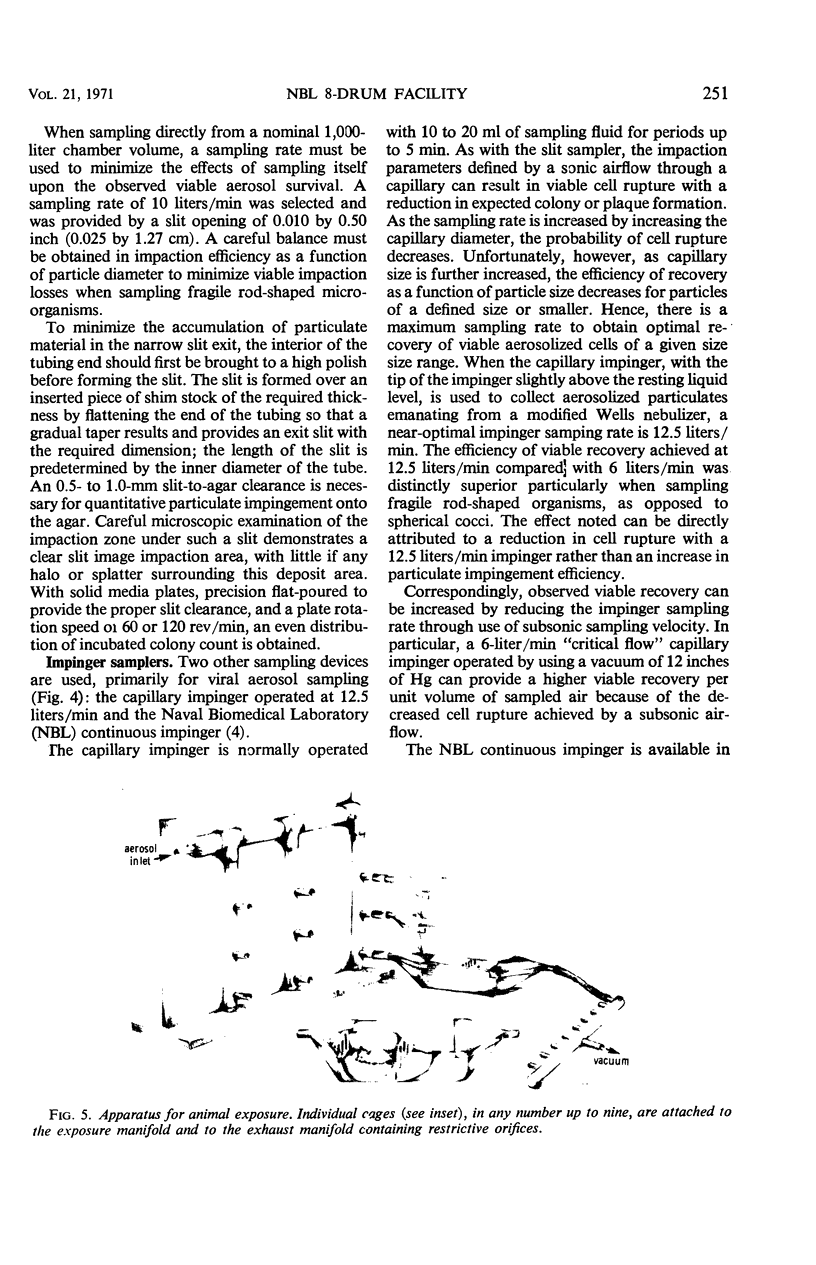
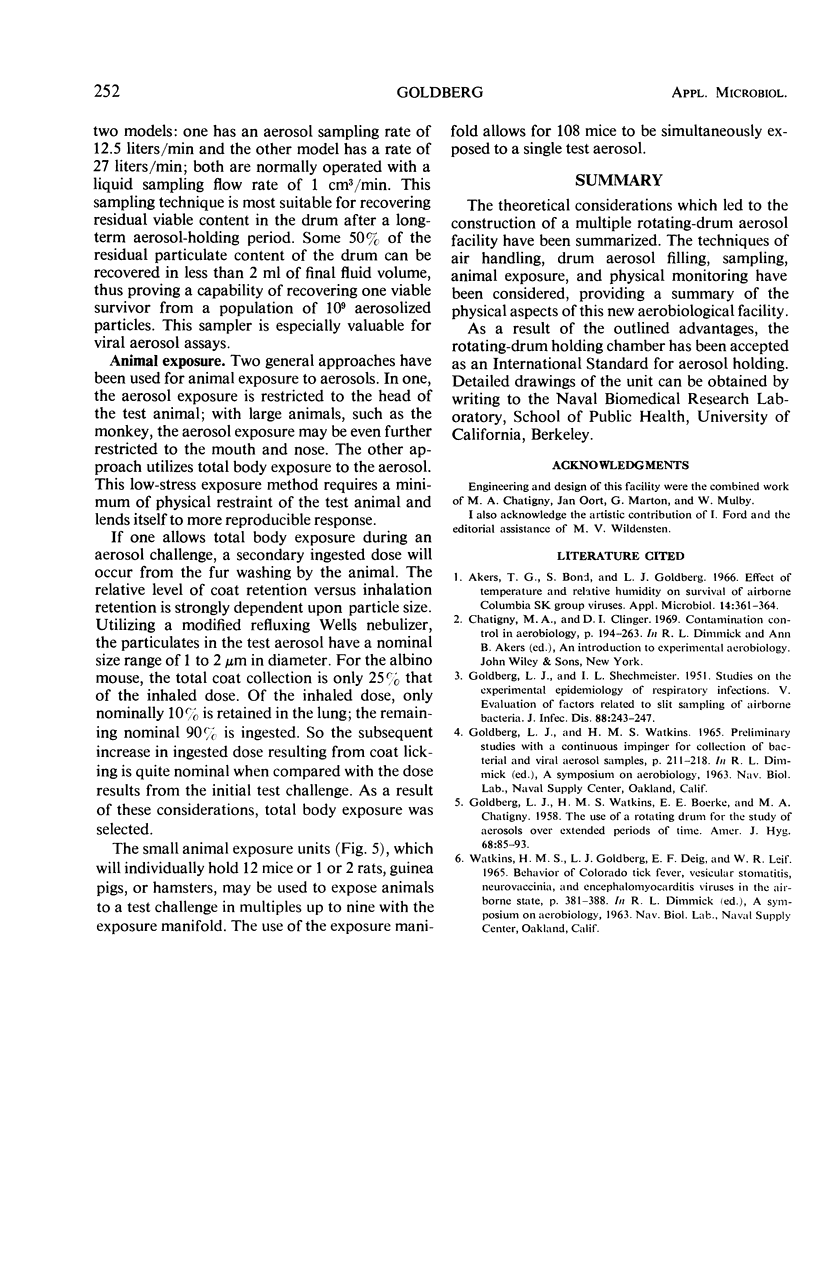
Images in this article
Selected References
These references are in PubMed. This may not be the complete list of references from this article.
- Akers T. G., Bond S., Goldberg L. J. Effect of temperature and relative humidity on survival of airborne Columbia SK group viruses. Appl Microbiol. 1966 May;14(3):361–364. doi: 10.1128/am.14.3.361-364.1966. [DOI] [PMC free article] [PubMed] [Google Scholar]
- GOLDBERG L. J., SHECHMEISTER I. L. Studies on the experimental epidemiology of respiratory infections. V. Evaluation of factors related to slit sampling of airborne bacteria. J Infect Dis. 1951 May-Jun;88(3):243–247. doi: 10.1093/infdis/88.3.243. [DOI] [PubMed] [Google Scholar]
- GOLDBERG L. J., WATKINS H. M., BOERKE E. E., CHATIGNY M. A. The use of a rotating drum for the study of aerosols over extended periods of time. Am J Hyg. 1958 Jul;68(1):85–93. doi: 10.1093/oxfordjournals.aje.a119954. [DOI] [PubMed] [Google Scholar]





